The St. Louis Blues have had some of the better luck in drafting prospects when compared to other organizations. Currently, they sit with 14 players that were originally Blues draft selections on their active roster. While some of their picks have worked out beautifully within St. Louis, other former draftees blossomed elsewhere.
This could be due to moving onto a stronger team, having more room to develop, or just found their game as their career advanced. In the 1980s, there were three players drafted by the Blues that were eventually moved and become stars elsewhere. These three players could have become stars had the team kept them around, but ultimately, they cemented themselves as legitimate players within their new beginnings.
Doug Gilmour (1983-1988)
Now remembered as one of the best players to ever don the Blue and White, Gilmour began his professional hockey career with the Blues. Falling in the draft, the team got an absolute steal selecting him in the seventh round of the 1982 NHL Entry Draft.
Gilmour made his debut as a member of the Blues in the 1983-84 season, putting up a solid rookie campaign of 53 points in 80 games played. It was clear that the young forward had potential as he continued to put up 50+ points each of his first three seasons until exploding in the 1986-87 season with 105 points. Even with Gilmour putting up amazing numbers and the Blues finding success within the regular season, this did not translate into the playoffs, only reaching the Conference Final once under his five-year tenure in St. Louis.
In the 1988 Offseason, the Blues knew they had to make a change in personnel in an attempt to end their playoff woes, as well as rid their attachment to some off-ice issues surrounding Gilmour.
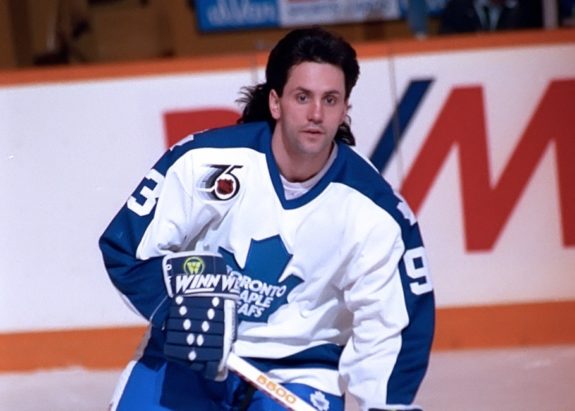
The Blues decided to pull the trigger after they agreed to a massive trade with the Calgary Flames, sending Gilmour along with Mark Hunter, Steve Bozek, and Michael Dark to the Flames, in return for Mike Bullard, Tim Corkery, and Craig Coxe. In this attempt to rebuild, the Blues failed horribly, giving up two terrific scorers in Gilmour and Hunter in return for a total of 23 points over 61 games played between Bullard, Corkery, and Coxe.
Gilmour continued his success in Calgary, with 295 total points in his four seasons with the Flames highlighted by a Stanley Cup victory in his first season with his new club. Even with his high-scoring efforts and team success in his four seasons played with the Flames, he found himself traded once again, this time to the Toronto Maple Leafs.
From here, these became Gilmour’s career years, scoring over 100 points in back-to-back seasons in 1993 and 1994. His tremendous offensive skillset gave Leaf fans playoff hope as they just missed out on a Stanley Cup Final appearance in 1993 after a controversial game seven loss to the Los Angeles Kings, and again in 1994, losing in 5 games to the Vancouver Canucks.
Gilmour continued to bounce around in his career, making stops in New Jersey, Chicago, Buffalo, and Montreal, before retiring officially as a Maple Leaf in the 2002-03 season. When analyzing his career, Blues fans wondered what could have been if management had decided to stick with him. What could have been a leader on and off the ice in a quest for victory could have shifted the Blues good, but not great run in the 1990s.
Rod Brind’Amour (1988-1991)
Now known as the Head Coach of the Carolina Hurricanes, Brind’Amour started his NHL career with the Blues. They selected him with the ninth overall pick in the 1988 NHL Entry Draft.
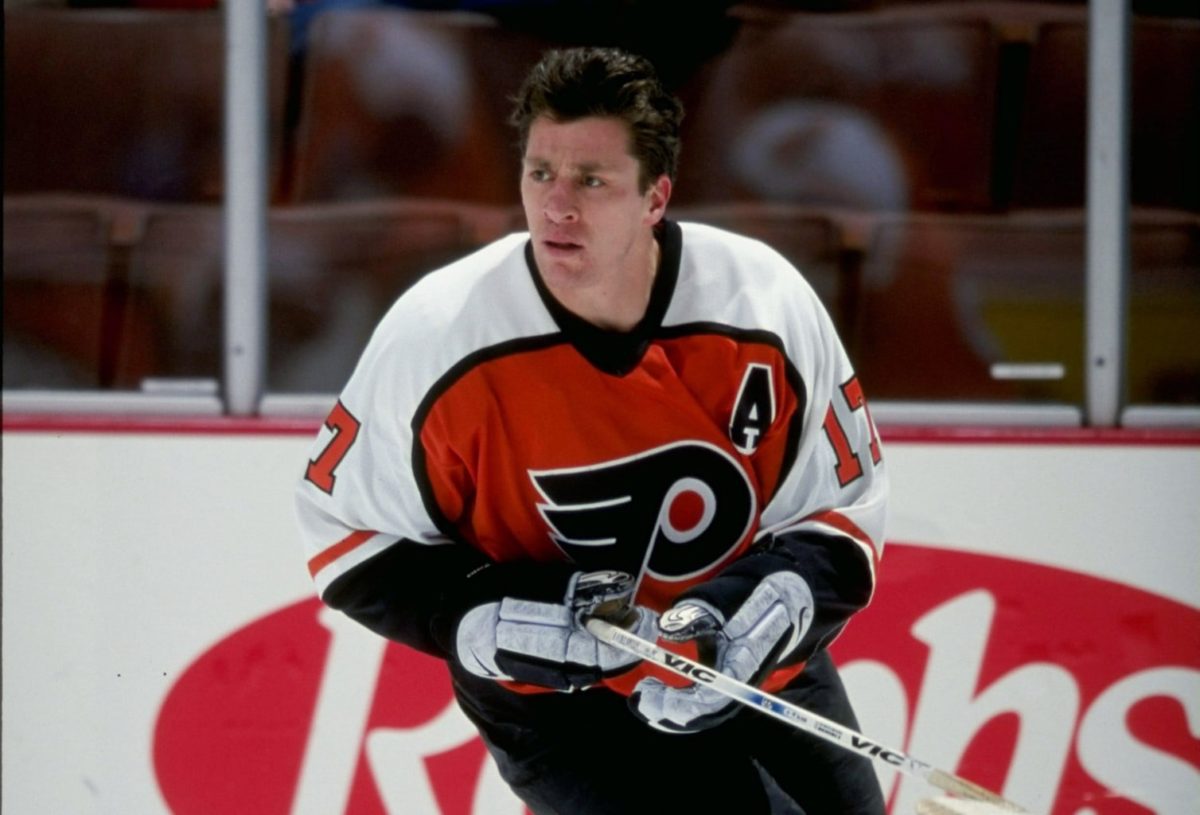
Making his NHL debut in the 1989 Stanley Cup Playoffs, Brind’Amour scored two goals in five appearances. He came out guns blazing in his first NHL regular season, scoring 61 points in his rookie year. Unfortunately, the following year his output dwindled. While only scoring 49 points, he started to grow into a tough and physical winger. His time with the Blues saw some solid production, but the Blues did not see him being a key player for their organization long-term.
In the 1991 offseason, the Blues dealt Brind’Amour and Dan Quinn to the Philadelphia Flyers in exchange for Ron Sutter and Murray Baron. Sutter and Baron went on to be decent players for the Blues, but their production was nothing compared to the success had by Brind’Amour in Philly.
In Brind’Amour’s first three seasons with Philadelphia, he went on to set three consecutive career highs in points and goals scored, quickly showing that the Blues may have moved on from him a bit too early. Even though he was playing exceptionally himself, the Flyers circled the bottom of the barrel and struggled to win games. This did not last forever, as Brind’Amour, alongside future superstars in Eric Lindros and Mark Recchi, were set to make a name for themselves.
In the shortened 1994-95 season, Brind’Amour and the Flyers ended their playoff drought and made it to the Conference Final, only to lose in five games to the eventual Stanley Cup Champions, the New Jersey Devils. With his production on the decline, the Flyers were on borrowed time to make a last-ditch effort at a Stanley Cup run. The Flyers got their chance in 1997, only to be swept in the Stanley Cup Final by the Detroit Red Wings, despite Brind’Amour’s spectacular 21 points in 19 games during the postseason.
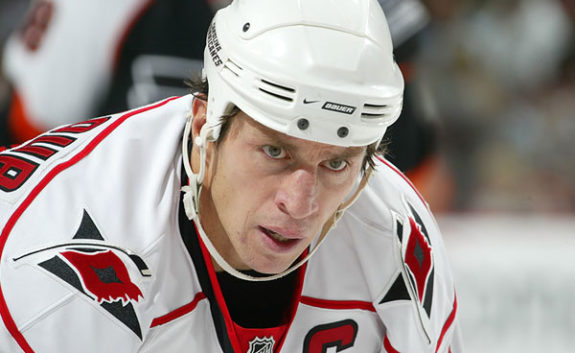
From that point on, the Flyers continued to struggle to escape the first round of the playoffs, and Brind’Amour could not play to the level he once had. This caused the Flyers to move him in a trade that became one of the biggest moves in franchise history for the Carolina Hurricanes.
The Hurricanes’ acquisition of Brind’Amour in the 1999-00 season served as the turning point in the organization’s quest for a Stanley Cup run, as well as a resurgence in his career. By bringing in his on-ice skills and leadership qualities, the young Hurricanes squad showed rapid improvements each season, culminating in a Stanley Cup victory in 2006. This championship run cemented Brind’Amour as a fan favorite within Carolina, leading to his continued success behind the bench as the Hurricanes Head Coach.
The Blues hasty moving of Brind’Amour was premature in hindsight, as the up-and-coming winger had shown his potential to impact the game on both sides of the puck. Had the Blues held on to him for a few more seasons, he could have served as an X-factor in several playoff runs in the 1990s into the 2000s.
Cliff Ronning (1985-1991)
Ronning may not be the flashiest name on this list, but the BC native had a stellar career as a playmaker that spanned over nearly 20 years. Selected late in the 1984 NHL Entry Draft, he had his name called by the Blues in the seventh round. He made his NHL debut in the 1985 NHL Playoffs, tallying two points in five games played.
In his first regular season with the Blues, Ronning had a serviceable year scoring 25 points in 46 games. He had his first breakout season in his third year in the NHL, where he registered 55 points, including 24 goals.
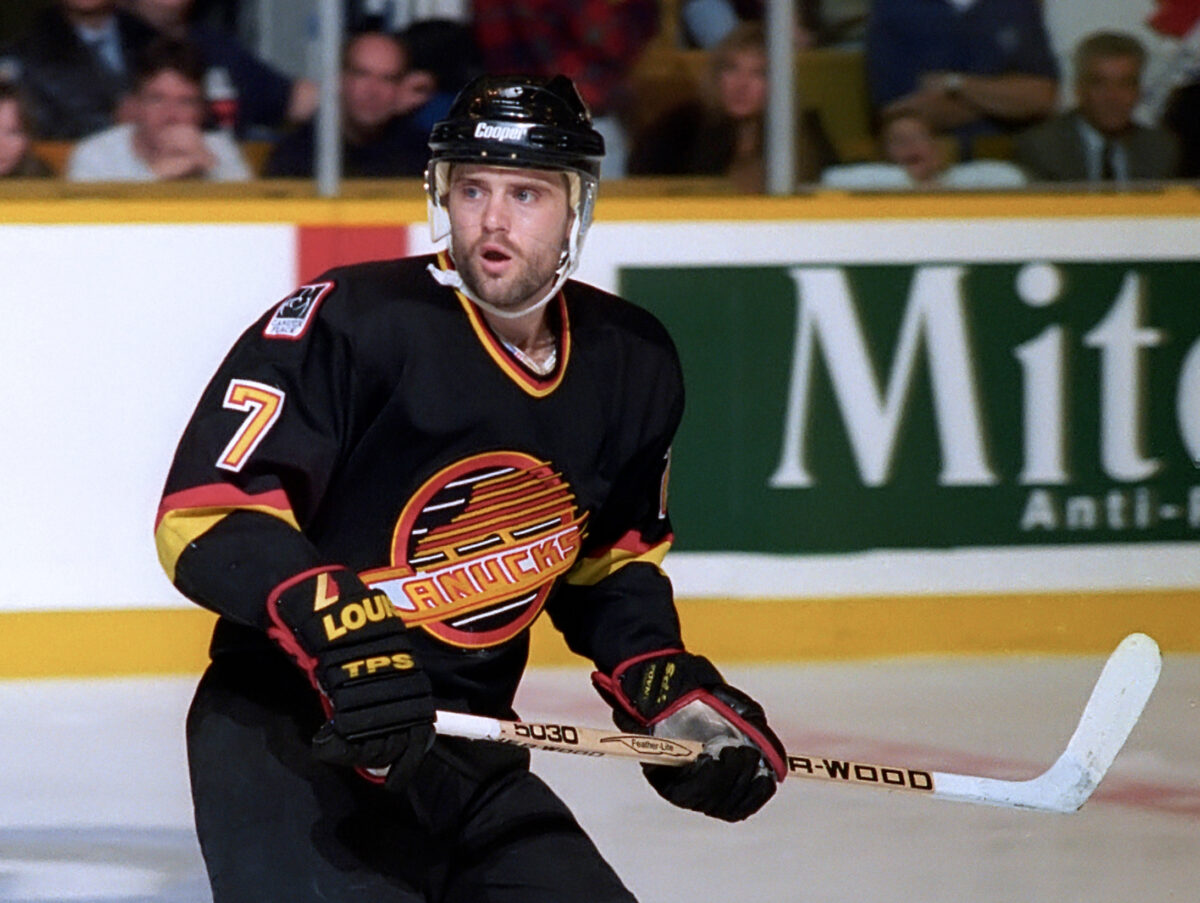
In the 1990-91 NHL season, the Blues took advantage of the young center’s hot streak and sold high on his current stock, sending him as well as Geoff Courtnall, Robert Dirk, and Sergio Momesso to the Vancouver Canucks in exchange for Garth Butcher and future asset included in the Rod Brind’Amour trade, Quinn.
After being dealt to Vancouver, Ronning truly hit his stride as a player. He went on to have tremendous success with the Canucks, crushing his previous season highs in points and goals scored in three consecutive seasons, including a terrific 85-point season in 1992-93.
Ronning became a major asset to the Canucks as they continued to rise the ranks of the NHL standings, making their case as potential Stanley Cup contenders. Playing alongside the likes of Pavel Bure and Trevor Linden, he and the Canucks success hit its peak in the 1994 Stanley Cup Final where they matched up with Mark Messier’s New York Rangers. In a classic, down to the wire series, the Canucks lost in seven games to the Rangers, with Ronning playing huge minutes and regularly contributing throughout the playoffs.
Even with Ronning continuing to contribute great numbers each season, the Canucks never came close to reaching the Final again. This led to him signing with the then Phoenix Coyotes in the 1996 offseason. In Phoenix, he did not miss a beat, continuing to play valuable minutes for his new team and putting up strong numbers as well. Even after being moved once again in the 1998-99 season, he showed no signs of slowing down.
While he did end up bouncing around the league with brief stints in Nashville, Los Angeles, Minnesota, and for the New York Islanders, Ronning made a positive impact for each club he was a part of. Looking back, it seems wherever he went, winning followed suit. If the St. Louis Blues had held onto Ronning early on in his career, potentially more team success could have been the result.
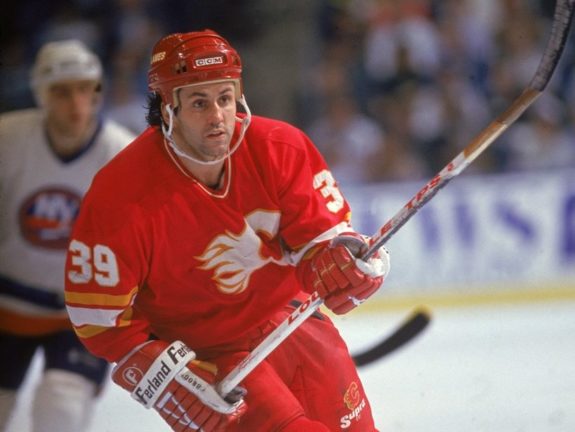
A fascinating area to note about the three players listed above is they all played for the Blues at virtually the same time. Brind’Amour and Gilmour just missing the window of opportunity to play together, whereas Ronning played alongside both Gilmour and Brind’Amour in St. Louis separately.
With all three players finding success with other clubs, while the Blues struggled to escape the second round for the better half of the 90s, it raises the question, what if the Blues had held onto these three? Possibly, a Stanley Cup that just slipped through their fingers.